Sylvania Emergency units for luminaires
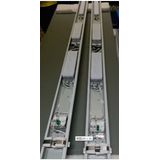
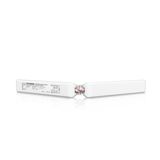
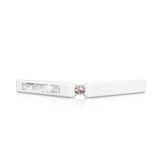
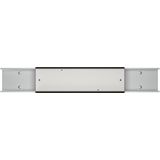
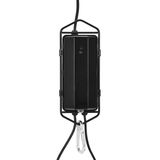


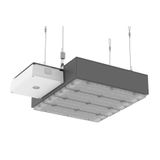


sylvania emergency units for luminaires commissioning and scope
Emergency logic has to be predictable on the first test and the hundredth. These units cover maintained and non-maintained operation on 220–240 V AC, feed constant-current LED strings at SELV, and publish clear I-V windows so drivers and light engines stay inside limits. Typical figures: 1–8 W output in emergency, programmable 100–700 mA, lithium iron phosphate packs as standard, 1 h and 3 h durations, ambient 0…+50 °C (model dependent), IP20 gear trays up to IP65 heads. Projects list sylvania emergency units for luminaires when they want addressable testing, calm inrush, and repeatable wiring across floors.
sylvania emergency lighting kits configurations and wiring
Room bundles arrive with inverter, battery, LED indicator, test switch, harness, and fixings sized to common housings. Through-wiring preserves DALI or 1–10 V control on mains while the inverter sits upstream of the LED engine for changeover. Cable colours and keyed plugs keep polarity honest; terminals accept 0.5…2.5 mm² per EN 60999. Installers choose sylvania emergency lighting kits to standardise on one harness length and one legend set per building.
sylvania battery backup units chemistry and lifetime
LiFePO₄ chemistry gives stable capacity, wide temperature tolerance, and long cycle life (often 1500–2000 cycles at rated depth). Charge algorithms protect cells during float; pack BMS supervises temperature, short-circuit, and over-discharge. Packs are offered as stick, flat, and brick forms with flying leads and locking plugs. Facilities specify sylvania battery backup units where service intervals must line up with annual test cycles and where ceiling void temperatures vary.
sylvania emergency modules drivers and interfaces
Constant-current ranges cover 100–700 mA with settable steps; some units include a boost mode to hold flux on high-V_f strings. Changeover is relay-isolated to avoid back-feeding drivers. Status pins expose inhibit, remote test, and fault. Compliance touchpoints for sylvania emergency modules: EN 60598-2-22 (luminaires for emergency lighting), EN 61347-2-13 (LED controlgear), EN 62386 DALI-2 parts for addressed test/reporting, EN 55015/EN 61000-3-2 EMC.
sylvania led emergency packs testing and reporting
Auto-test variants schedule function and duration checks with visual codes at the indicator; addressable models report battery %, elapsed test time, lamp-fault, and duration status to the line controller. Reset and calendar logic live in firmware so monthly and annual tests do not collide with occupancy schedules. Specifiers pick sylvania led emergency packs when compliance teams require downloadable logs rather than paper tick-sheets.
sylvania safety lighting accessories hardware and IP
Plug-in green indicators, recessed/Surface test buttons, IP-rated grommets and glands, label frames, and replacement legends share hole geometry across kits. Stainless fixings and closed-cell gaskets keep seals honest in semi-damp spaces; 360° braid clamps preserve EMC at metal entries. Maintenance teams stock sylvania safety lighting accessories so lens swaps or indicator replacements never drop the enclosure rating.
sylvania emergency control units integration and BMS
DALI-2 addressing supports scenes for inhibit/boost, emergency profile selection, and full test/result objects for export to a BMS via BACnet/KNX gateways. Mains-return hold-off prevents surge stacking after outages; fail-safe defaults hold egress at 100 % if comms are lost. Energy dashboards aggregate run-hours and test outcomes. Engineers specify sylvania emergency control units to keep lighting, safety, and reporting on one line without custom scripts.
Technical specifications and standards for engineers
- Electrical: 220–240 V AC input; SELV LED output; programmable 100–700 mA; emergency power 1–8 W; inrush declared for MCB sizing.
- Batteries: LiFePO₄ packs with BMS; typical 1 h/3 h durations; charge temperature windows published per pack.
- Conrols: DALI-2 emergency objects, auto-test firmware, remote test/inhibit pins; maintained and non-maintained modes.
- Environment: −10…+50 °C typical; IP20 gear, IP54/IP65 heads; glow-wire ≥650 °C on plastics used in insulated cavities.
- Compliance: EN 60598-2-22, EN 61347-2-13, EN 62386 (DALI-2), EN 55015, EN 61000-3-2/-3, EN 62471.
Applications and compatibility
Offices and schools: recessed panels and linears with 3 h duration and addressable test. Healthcare: quiet indicators, sealed faces, documented charge/ambient pairing. Housing and hotels: bulkheads with self-test to reduce callouts. Car parks and plant rooms: IP65 heads, stainless fixings, longer cables, higher surge coordination. Emergency circuits remain upstream of dimming; label the gear tray after conversion with date, duration, and circuit ID.
Selection criteria for B2B clients
- Duration and flux: 1 h vs 3 h, target lumens on egress path, LED string V_f/I_f.
- Test method: self-test vs DALI-2 addressable with log export.
- Battery choice: LiFePO₄ size vs ambient and access interval; connector family for fast swaps.
- Wiring: harness length, indicator style/position, gland thread, and strain-relief type.
- Compliance: document objects reported, monthly/annual schedule, and acceptance tests (function, duration, charger health).
Advantages of working with Bankoflamps
We tailor pricing to room bundles and expose live EU stock before crews are booked. Quotes land in roughly an hour with EAN/MPN so variants stay fixed. Your portal shows lead times, shipment status, and downloadable price lists with validity windows you can plan around. Approved clients can use post-payment up to 30 days. We consolidate partials to cut freight, and your account manager cross-checks duration class, current setting, battery pack form, indicator hardware, DALI profile, gland threads, and label sets against your drawings so cartons arrive site-ready across France, the Baltics, Germany, Spain, Italy, Belgium, and the Netherlands.